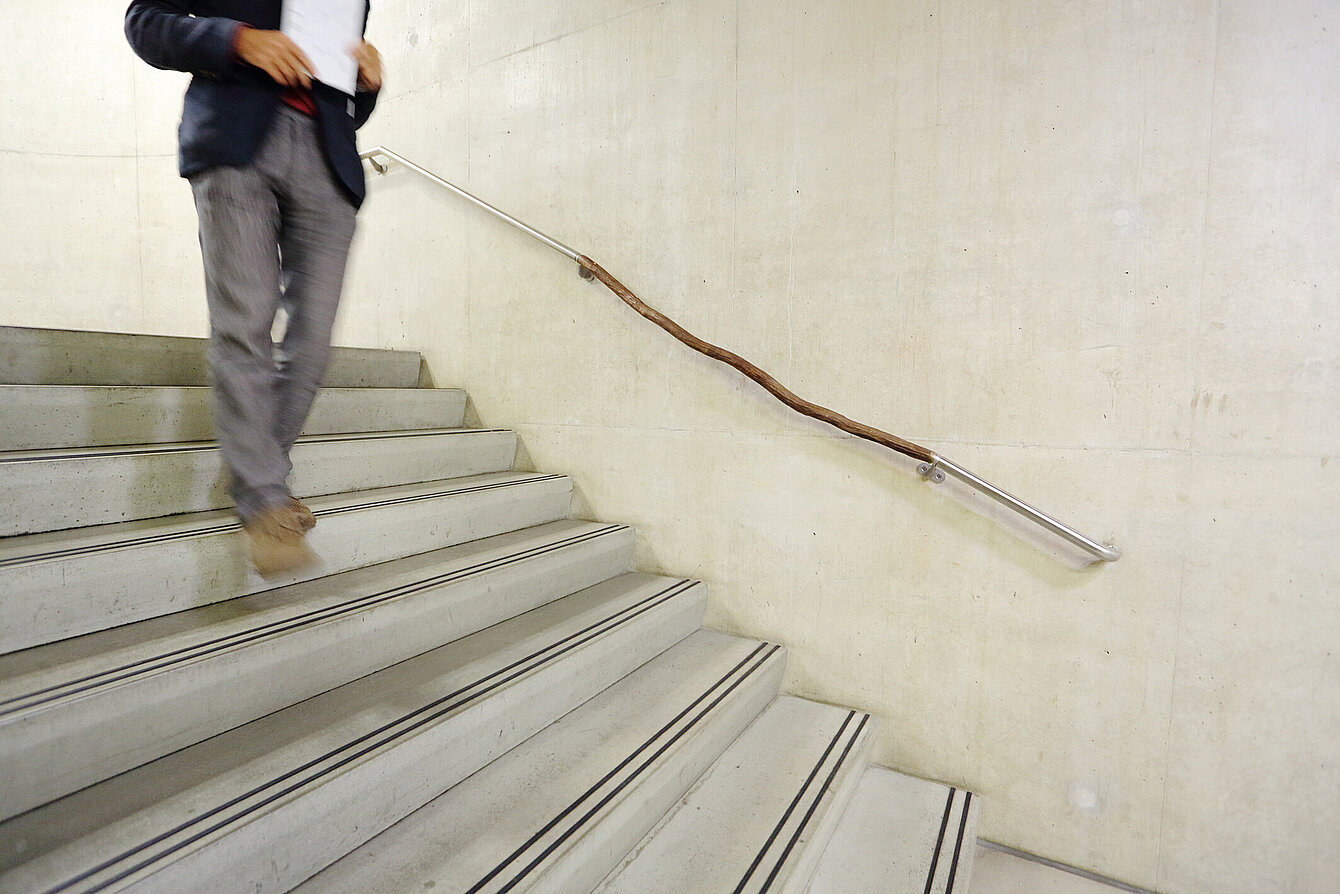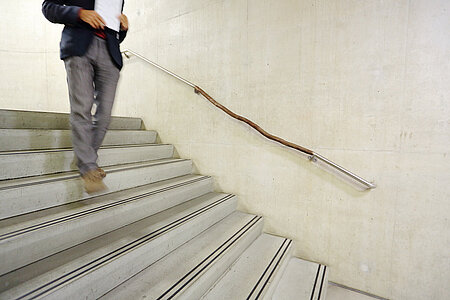The project Site/Cite. Speaking in Tongues While Splitting One’s Own by artist Birke Gorm (*1986 in Hamburg, lives in Vienna) emerged as one of the two victorious projects at the invitation-only competition for the series Open House.
Eight national and international artists were invited to ‘infiltrate’ the Kunsthaus Graz. To answer such questions, we went looking for artistic tools that broaden our understanding:
- What are the contents of this art space and how is it to be understood?
- Which language is spoken by the public institution and what is its essence?
- What barriers exist – structurally and in the minds of visitors and staff at the Kunsthaus – and how can these be removed?
The branch can be found as a formal element in the artistically reworked texts, too, free copies of which hang in the hallway. Texts written by curators, educators and the press department concerning current exhibitions are censored by branches, hollowed out and investigated in various ways: how comprehensible they are, their potential for communication, and the extent to which they represent the institution. In the title, Gorm alludes to the language commonly used in contemporary art discourse, a language sometimes hard to interpret. She takes this as her theme by speaking in precisely the same language.
To avoid becoming dizzy from all this ‘speaking in tongues’, the bronze handrail offers support: bronze as a traditional, artificially conveyor of information – think of the many bronze representational sculptures found in European cities – not only carries the sculptors’ messages, but also within it (as time passes) the traces of those it moves. Cast in the natural forms of the branch and mounted in the hallway of an art institution, it enables the walker to maintain balance even over difficult terrain.





















